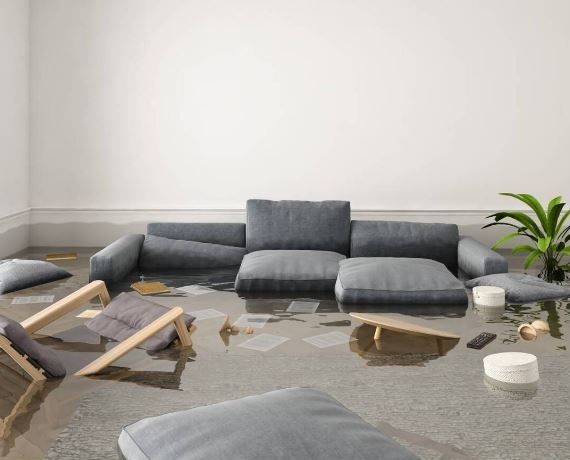Water damage can cause significant structural and health issues if not addressed promptly. Whether it’s from burst pipes, flooding, or leaks, quick action is essential to prevent extensive damage. This guide provides a detailed process for Water Damage Restoration Perth, ensuring your home or business is restored effectively. Additionally, we’ll discuss Water Damage Mould Removal, a crucial step in preventing long-term health hazards.

Understanding Water Damage and Its Effects
Water damage can affect various areas of your property, leading to structural weakening, electrical hazards, and mould growth. Common causes include:
- Heavy rain and flooding
- Burst or leaking pipes
- Roof leaks
- Blocked drains or overflowing gutters
- Faulty appliances and plumbing issues
Types of Water Damage
- Clean Water Damage – Caused by fresh water from broken pipes or rainwater, posing no immediate health risk.
- Grey Water Damage – Contaminated water from appliances like washing machines and dishwashers, which may contain bacteria.
- Black Water Damage – Highly contaminated water from sewage backups or flooding, requiring professional intervention.
Immediate Dangers of Water Damage
- Structural Damage: Water weakens wood, drywall, and foundations.
- Mould Growth: Moisture encourages rapid mould development, leading to health risks.
- Electrical Hazards: Water can cause electrical shorts, increasing fire risks.
- Pest Infestation: Damp environments attract termites and other pests.
Step-by-Step Water Damage Restoration Process
1. Immediate Action: Stop the Source
- Turn off the main water supply if the damage is due to plumbing issues.
- Use sandbags or barriers if flooding is a risk.
- Disconnect electrical appliances to prevent short circuits.
- Document the damage with photos for insurance claims.
2. Water Extraction and Drying
The sooner you remove water, the better. Steps include:
- Using industrial vacuums or pumps to extract standing water.
- Deploying high-powered fans and dehumidifiers to accelerate drying.
- Opening windows and doors to increase ventilation.
- Checking hidden areas like crawl spaces and insulation for trapped moisture.
3. Assessing Structural Damage
Once the area is dry, inspect for:
- Warped flooring and damaged drywall.
- Weakened ceilings and compromised foundations.
- Water seepage into walls, requiring professional assessment.
- Stains, peeling paint, and odors indicating hidden moisture issues.
4. Water Damage Mould Removal
Mould can develop within 24-48 hours of water exposure, causing serious health risks. Effective mould removal includes:
- Identifying visible and hidden mould growth using thermal imaging.
- Using anti-fungal solutions and HEPA vacuums to treat affected areas.
- Installing air purifiers to remove airborne spores.
- Seeking professional Water Damage Mould Removal services if mould is widespread.
- Replacing or restoring contaminated materials like carpets, drywall, and wood structures.
5. Sanitization and Deodorization
- Disinfect all affected surfaces to prevent bacterial growth.
- Use air scrubbers and ozone treatments to eliminate musty odors.
- Replace carpets and porous materials that cannot be salvaged.
- Apply anti-microbial coatings to prevent future mould growth.
6. Restoration and Repairs
After the cleaning process, repairs may be necessary:
- Flooring – Repair or replace water-damaged floorboards and carpets.
- Walls & Ceilings – Repaint or install new drywall where needed.
- Plumbing & Roofing – Fix leaks to prevent future water damage.
- Furniture & Belongings – Restore salvageable items and replace irreparable ones.
- HVAC Systems – Inspect and clean air ducts if water damage affects ventilation systems.
Why Hire Professionals for Water Damage Restoration Perth?
While DIY methods can help, professional services offer:
- Advanced moisture detection technology.
- Industrial-grade drying and dehumidifying equipment.
- Certified expertise in Water Damage Mould Removal.
- Quick and efficient restoration, preventing further damage.
- Assistance with insurance claims to ensure proper coverage.
- Expertise in handling hazardous waste and contaminated materials.
Preventative Measures to Avoid Water Damage
To reduce the risk of future water damage, consider these preventive actions:
- Regular Maintenance: Inspect plumbing, roofing, and drainage systems regularly.
- Sealing and Waterproofing: Use water-resistant coatings and sealants on vulnerable surfaces.
- Proper Drainage: Ensure gutters and downspouts direct water away from your foundation.
- Appliance Checks: Inspect washing machines, dishwashers, and water heaters for leaks.
- Smart Water Sensors: Install leak detection devices to alert you to water leaks in real time.
Conclusion
Effective Water Damage Restoration Perth involves immediate action, thorough drying, mould removal, and professional restoration. Ignoring water damage can lead to severe consequences, so it’s crucial to act quickly. For expert assistance, seek Water Damage Mould Removal services to ensure your home remains safe and structurally sound. Prevention is key, so invest in regular inspections and proactive measures to safeguard your property from future water damage.
